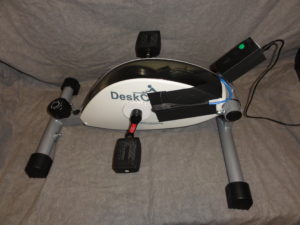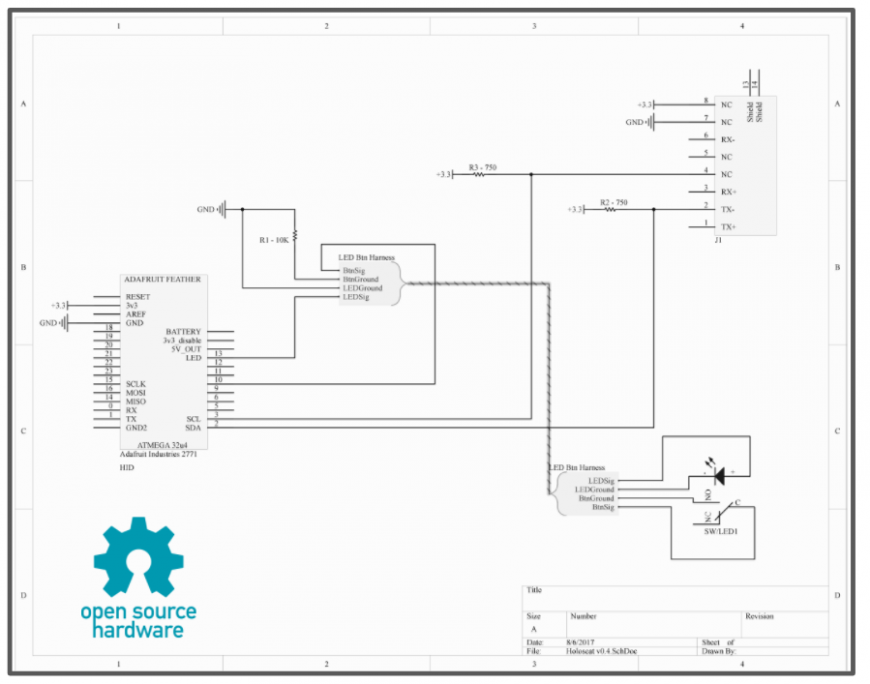This is the second in a series of posts recapping our 2017 Holoseat development and sharing our 2018 plan. In the first post we covered our 2017 goals and the reasons behind them. Today’s post is about how we achieved those goals, just in time for SyndCon 2017.
While 2017 was a huge success, I was completely surprised by the specifics of how we accomplished our goals. As a quick recap, here are our goals for 2017.
- Finalize the hardware design needed to address the key feedback from demos at SyndCon 2016.
- Run a private beta test program for Holoseat to vet the design before releasing version 1.0.
So, what happened? We started the year with some less than great technical and business assumptions. On the technical front, we were convinced we needed to upgrade out of the Adafruit Feather to a full on system-on-a-chip controller board. And on the business side, we allowed ourselves to be caught up in the siren’s song of crowd source campaigns too soon. Sadly, these assumptions took us down rabbit holes most of the year. Fortunately we caught ourselves in time for a great SyndCon 2017.
Finalizing the Hardware Design
We started 2017 chasing down two seemingly unrelated design issues: profile management and Holoseat’s sensitivity to pedaling activity. Profile management covers things like trigger cadence (how fast an individual has to pedal to trigger walking). And Holoseat’s sensitivity to pedaling actions impacts how long it takes Holoseat to recognize changes in pedaling. Bryan and I focused the first half of 2017 on addressing profile management. This effort took the form of redesigning Holoseat around a brand new family of development boards: the CHIP/CHIP Pro. Moving to the CHIP boards involved redesigning basically everything about Holoseat and led to an enormous amount of scope creep. I could write pages retrospecting how exactly we got to that point, but that’s another blog post.
We were still testing the fundamental technologies we needed for a CHIP based Holoseat with only 8 weeks to go until SyndCon. To say we were off plan is an understatement. Things turned around when Bryan took charge of designing a custom tone ring to use with a new sensor. Within four weeks we had a working prototype for these sensor upgrades, versus the four months we spent working on the move to CHIP. More importantly, the new design’s improved sensitivity yielded unexpected benefits. Namely, Holoseat was now responsive enough to calculate trigger cadence in real time.

We quickly realized this “adaptive cadence” capability meant we could drop profile management and go back (again) to our original Feather based design. After conducting additional testing we also concluded we had arrived at our minimum viable product (SyndCon prototype shown above). And what became of all of the effort we put into researching the CHIP boards? A large chunk of that work went into mastering Python in IoT applications. It didn’t take us long to realize the bulk of that work could be re-purposed into the development of a brand new, and feature complete, desktop configuration app. Further, thanks to Python’s portability, the same app will run on Windows, Mac, and Linux. And should we need to revisit a CHIP based Holoseat, it will work there, too.
Setting Up Our Testing Program
One of the things we have to keep in mind is Holoseat is more than just a technical project. It is also a business and an investment of our time and money. This means we divide our effort between technical and business matters. For example, 2017 included research into preparing for and running crowd source campaigns. One of our conclusions from this research was we were not ready to run a crowd source campaign in 2017. We simply did not have a large enough online following to form the foundation of a successful campaign.
What we did have was a supportive core of fans asking us when they could get their own Holoseats. The value of this core group of supporters became apparent to us after reading Building a Hardware Business. The authors discuss different growth strategies including building on a small core of passionate users. This strategy resonated with us and we decided it was time to organize our core fans into a testing community.
So, we put together our Alpha Test Program and offered 5 slots at SyndCon. We came home with 8 deposits for Alpha units. One fan even tried to give us his money during our annual Holoseat presentation! #winning Having 8 high quality testers is going to be significantly better for us in the long run. Now the race is on to complete v1 Alpha so our testers can get their hands, er feet, on Holoseat.
Stay tuned for Part 3 where we lay out the 2018 plan and cover how we are doing so far.


